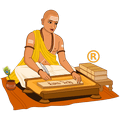























Sunrise05:50 AM
Sunset05:47 PM
Moonrise08:05 AM
Moonset07:59 PM
Shaka Samvat2234 Nandana
Vikram Samvat2369 Saumya
Gujarati Samvat2368 Shobhakrit
Amanta MonthAshwina
Purnimanta MonthAshwina
WeekdayShukrawara
PakshaShukla Paksha
TithiTritiya upto 04:37 PM
YogaVaidhriti upto 02:22 PM
KaranaTaitila upto 06:18 AM
KaranaGaraja upto 04:37 PM
KaranaVanija upto 03:01 AM, Oct 05
Pravishte/Gate14
Rahu Kalam10:19 AM to 11:48 AM
Gulikai Kalam07:20 AM to 08:49 AM
Yamaganda02:47 PM to 04:17 PM
Abhijit11:24 AM to 12:12 PM
Dur Muhurtam08:13 AM to 09:01 AM
Dur Muhurtam12:12 PM to 01:00 PM
Amrit Kalam10:48 AM to 12:14 PM
Varjyam11:43 PM to 01:10 AM, Oct 05
Notes: All timings are represented in 12-hour notation in local time of Mawlamyine, Myanmar with DST adjustment (if applicable).
Hours which are past midnight are suffixed with next day date. In Panchang day starts and ends with sunrise.



 Simha
Simha Magha 08:04
Magha 08:04

 Simha 10:59
Simha 10:59 U Phalguni 26:56+
U Phalguni 26:56+

 Kanya
Kanya Hasta 24:05+
Hasta 24:05+

 Tula
Tula Swati 18:39
Swati 18:39

 Vrishchika
Vrishchika Anuradha 14:35
Anuradha 14:35

 Kumbha 15:30
Kumbha 15:30 P Bhadrapada 22:12
P Bhadrapada 22:12

 Meena 28:16+
Meena 28:16+ Revati 28:16+
Revati 28:16+

 Mesha
Mesha Ashwini 07:23
Ashwini 07:23

 Mesha 17:09
Mesha 17:09 Bharani 10:25
Bharani 10:25

 Vrishabha 28:50+
Vrishabha 28:50+ Rohini 15:45
Rohini 15:45

 Mithuna
Mithuna Ardra 19:17
Ardra 19:17

 Karka
Karka Pushya 20:15
Pushya 20:15

 Karka 19:39
Karka 19:39 Ashlesha 19:39
Ashlesha 19:39

 Kanya 21:49
Kanya 21:49 Hasta 11:17
Hasta 11:17

 Vrishchika
Vrishchika Anuradha 24:02+
Anuradha 24:02+In Hindu Calendar, the day starts with local sunrise and ends with next day local sunrise. As sunrise time is different for all cities, Hindu Calendar made for one city is not valid for any other city. Hence it is important to use location based Hindu Calendar, like this website. Further, each Hindu day consists of five elements, which are called angas. These five elements are -
In Hindu Calendar, all five elements together are called Panchang. (In Sanskrit: Panchang = Pancha (five) + Ang (part)). Hence Hindu Calendar which shows all five elements for each day is called Panchang. In South India Panchang is known as Panchangam.
When Hindu Calendar includes Muslims, Sikh, Christian, Buddhist and Jain festivals, including national holidays, it is called as Indian Calendar.